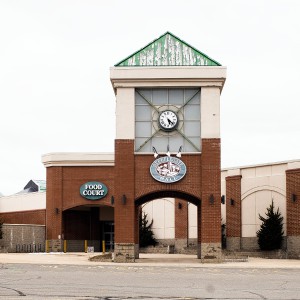In Spokane, a housing strategy rejected by NH lawmakers gets its test
| Published: 03-02-2023 5:27 PM |
When a proposal for a statewide law allowing single-family homes to be subdivided hit the New Hampshire House floor last week, the outcry was swift.
House Bill 44 would have allowed any single-family homeowner connected to municipal sewer and water lines to apply to split their home into a maximum of four distinct housing units. But despite supporters’ arguments it could alleviate the state’s tight housing market, Republicans and many Democrats called it intrusive – an unwise state overstep into local zoning laws. The bill was quickly killed, 209-141.
“We should not consider distant politicians and bureaucrats in Concord experts on each of our individual New Hampshire towns and cities,” argued Rep. Len Turcotte, an Allenstown Republican.
Three thousand miles away, residents in Spokane, Washington, are putting that same idea to the test.
Last July, the 229,000-population city near the Idaho border passed an interim zoning ordinance that allows up to four units for any single-family home in the city. The changes allow homeowners or developers to convert houses into duplexes or multi-unit apartments, provided that the construction meets all other zoning and building requirements in the area.
Seven months later, Spokane city officials say the interim rule is key to their efforts to solve a crisis in housing availability.
“If we take those smaller units off the table, we’re basically restricting people’s choices,” said Spencer Gardner, the Spokane city planning director, in an interview. “So by reintroducing this possibility over the long run, we’re hoping that we’ve reintroduced some of that choice so that people can make their own decisions about where they live.”
The approach taken in Spokane adheres to a housing strategy cities and states are increasingly considering: the push to build “missing middle” housing. At a time when many areas of the country are struggling to provide housing and prices are rising, some advocates argue the most efficient way forward is not to build new single-family homes or apartment buildings, but to encourage owners of existing homes or properties to renovate or divide to accommodate more residents.
Article continues after...
Yesterday's Most Read Articles
 Neighboring landowner objection stalls Steeplegate redevelopment approval
Neighboring landowner objection stalls Steeplegate redevelopment approval
 As N.H. coal-fired plants shift to solar, offshore wind beckons
As N.H. coal-fired plants shift to solar, offshore wind beckons
 Body of long-missing hiker found, pinned by boulder in Dry River
Body of long-missing hiker found, pinned by boulder in Dry River
 Baseball: Undermanned, Belmont battles against one of the state’s top pitchers
Baseball: Undermanned, Belmont battles against one of the state’s top pitchers
 UNH seeks vandal who accused university of genocide in spray-painted message
UNH seeks vandal who accused university of genocide in spray-painted message
 UNH Faculty Senate calls on university to investigate police response to protest
UNH Faculty Senate calls on university to investigate police response to protest
But that approach, known as “infill development,” is often stymied by local zoning codes, many of which prohibit single-family homes from being used for any other purpose. And now, some cities and states are stepping in to remove those barriers.
Last year, Maine passed legislation allowing up to two units to be built on single-family housing lots in all areas of the state, and up to four units in communities with designated “growth areas.” The Vermont Legislature is considering a similar bill this year.
A handful of cities and towns in New Hampshire have also passed versions of the idea. The town of Hollis allows “one 2 family dwelling unit” to be constructed per residential lot. Exeter allows residents to apply for special exceptions to create up to four units, and Dover allows “3-4 family” dwellings on residential lots.
The idea to make that kind of zoning rule automatically apply across New Hampshire, however, has recently hit a political wall. Opponents in both parties have cited the rights of other homeowners to live in low-density neighborhoods, and have raised concerns about municipalities’ capacity to handle increased water and sewer usage.
“There is zero debate that towns and cities currently can accomplish on their own the zoning regulations which this bill attempts to accomplish by force from above (the state),” argued Turcotte ahead of the vote last week. “Zoning regulations are the purview of the municipalities, those that know their infrastructure and citizens’ preferences best.”
An effort to pass a similar bill was tabled in the House last year; this year, the bill was killed.
In Spokane, the change was made relatively quickly out of urgency. Once a sleepy area of the state, the city – a four-hour drive from Seattle – has seen a major population boom in recent years, Gardner says. With that growth came “stratospheric increases in house prices.”
By 2021, Spokane Mayor Nadine Woodward had declared a “housing emergency” for the city and vowed that officials would design an action plan. As the city conducted listening sessions to design that plan, residents had a clear message, Gardner said: “Do something already.”
Some of the city’s proposals were geared to provide an immediate boost, including new financial incentives to convert commercial buildings into homes and an expedited review process for new development applications.
Others were more long term. The mayor’s emergency proclamation included a call to immediately increase housing capacity. That’s where the idea of the zoning law change came in.
Under Washington state law, municipalities are allowed to implement interim zoning ordinances – temporary changes that can take effect without the traditional review process. The city used the law to put in place the new single-family zoning last summer. The law allows for a one-year trial period, but Gardner said the city plans to have a permanent change in place before it expires.
Gardner compares the housing crisis to a heart attack. The first step for public officials is to respond to the immediate threat to life first and provide relief. The second step is to make sure it doesn’t happen again.
“There are other efforts that we are undertaking to try to jumpstart things to try to get the heart going again,” he said. “… But as we have responded to the crisis, we have been asking ourselves, how do we prevent this from happening again? And that’s where a change like this allows for that more incremental, slower change to occur, so that you don’t get a buildup of a backlog of unbuilt houses.”
In designing the changes, Spokane officials were attempting to create a situation with the biggest potential impact. Currently, two-thirds of Spokane consists of single-family homes, Gardner estimates. The remainder is a mix of moderate-density lots, such as duplexes and townhouses, as well as apartment buildings.
Applying the new zoning rules to all lots – including single-family homes – would allow owners and developers to submit as many proposals as possible, Gardner argued.
Spokane’s population spike was not unprecedented. Back in the early 20th century, the city had seen a similar swell in numbers. By analyzing the city’s response to that population increase, Gardner and others were able to take away lessons. One lesson: The best way to accommodate more people is to allow for a mix of housing types in each neighborhood – single-family homes abutting multi-unit houses.
It’s a pattern that Gardner said the city is now hoping to reintroduce. “There really was a strong case that this is not just a new idea,” he said. “This is actually going back to old ideas that worked for us in the past.”
Officials hope allowing for varied housing types in different neighborhoods also helps break down income barriers, allowing people with lesser means to move to areas of the city with better schools or job opportunities, Gardner said.
The idea passed the city council unanimously. But it had its share of skeptics in certain neighborhoods in Spokane. City officials made the case that the new loosening of development restrictions would not change the character of the city.
“We tried really hard to make sure people understood that when we’re talking about middle housing, we’re not talking about apartment complexes,” Gardner said. “We’re talking about buildings that look just like a single-family home, but may have multiple units in them.”
And now that the ordinance is in effect, Gardner said, those skeptics appear less concerned.
“People realize that it actually has not dramatically changed their neighborhood overnight,” he said. The city has seen a handful of new project applications, not a tsunami, Gardner said.
Despite the flashiness of the proposal, Gardner says many owners of single-family homes are simply not interested in applying to develop their homes into multiple-unit apartments. Instead, the new zoning changes are more attractive to developers, who can retrofit underdeveloped lots or homes to accommodate more people.
In one case, a developer has proposed taking a double-wide lot with a single-family home on one end and dividing it into separate lots, using the empty side yard to build townhouses that meet the neighborhood zoning requirements. “So out of one lot that had one house, you’re now going to have four lots with four houses,” Gardner said.
Gardner and other Spokane officials are hoping to take the approach statewide; the city has advocated for a change in Washington state statute, Gardner said. The Washington city of Tacoma has adopted a similar zoning change, but Gardner argues that taking the approach to just one city is not enough.
“There’s sort of a collective action problem here,” Gardner said. “If one city steps forward and does it, then they attract that type of development, and can soak up some of the demand in the market. And other communities then don’t necessarily need to feel the pressure so they can sort of sit back and let the other city do all the work.”
In New Hampshire, advocates for HB 44 argue it was hampered by misinformation. The worries about a strain on municipal water or sewer lines are misplaced, argued Nick Taylor, executive director of the Workforce Housing Coalition of the Greater Seacoast, because any units that placed a burden would not receive a building permit.
“Part of the reason why we love New Hampshire and so many people move here is because of the open spaces and the White Mountains and the hiking and all of those great things that are about New Hampshire,” he said. “And if you allow for this infill, where there’s some more capacity to do it, you’re preventing that sort of urban sprawl.”







 As site testing begins on new middle school site, activists file to put location debate on the ballot
As site testing begins on new middle school site, activists file to put location debate on the ballot For the first time, education commissioner speaks publicly about minimum standards revision, but he faces skepticism
For the first time, education commissioner speaks publicly about minimum standards revision, but he faces skepticism Adam Montgomery sentenced to minimum 56 years on murder charges in young daughter’s death
Adam Montgomery sentenced to minimum 56 years on murder charges in young daughter’s death
